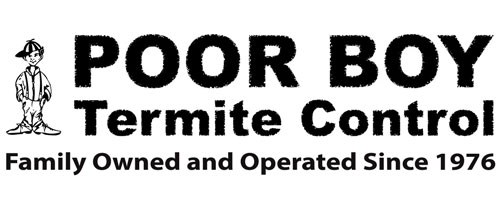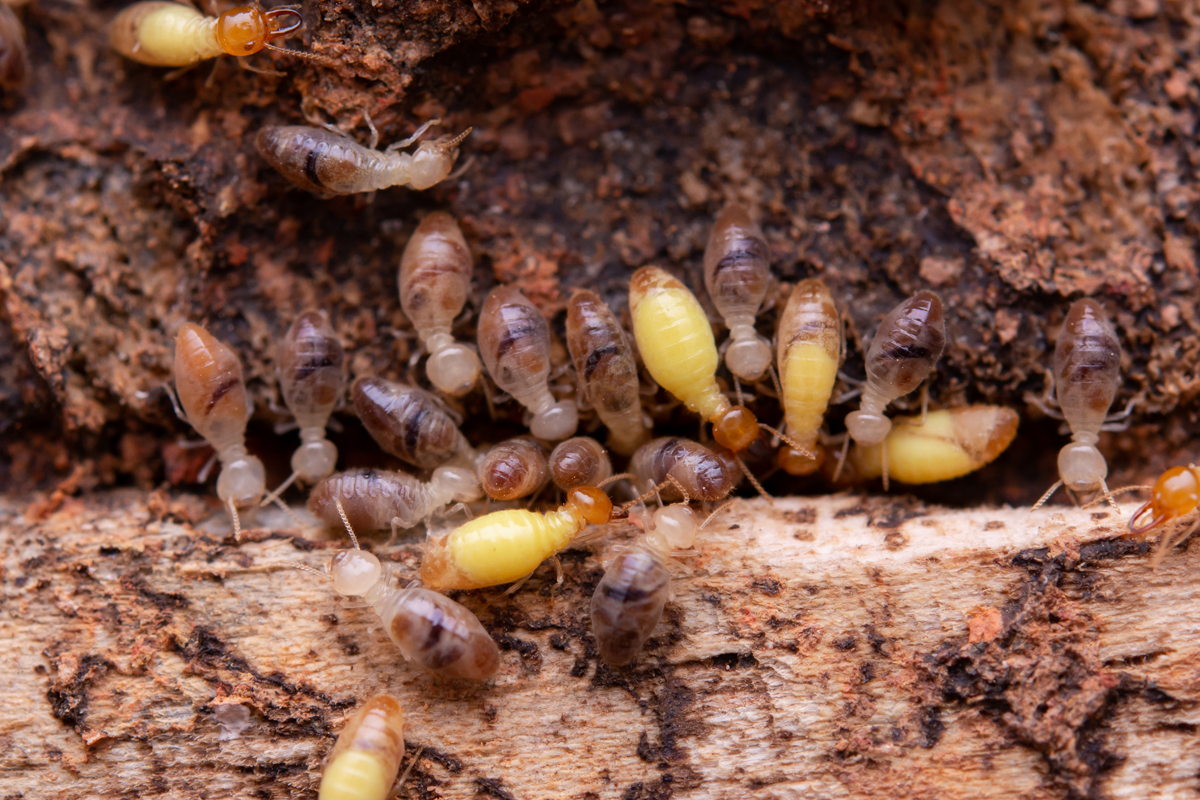Let’s compare the two main types of termites found in the U.S. today: drywood and subterranean termites.
Drywood Termites
Drywood termites do not need contact to the ground in order to flourish. They are known to wander up to a mile to locate a home and will develop a colony anywhere they can find a preferable source of wood.
These termites require less moisture than either dampwood or subterranean termites to thrive and can usually be located in attics in which they infest the structural wood. Other items they could infest comprises of dying or dead shrubs and trees, electricity poles, furniture, and fences.
- Size: 3/8-1 inch.
- Color: Pale brown, dark brown, or yellowish tan.
- Body Shape: Distinct head, thorax, and abdomen with a dark exoskeleton.
- Wings: Equal in size, shortly shed after swarming.
Subterranean Termites
Named because of their preference to build their nests underground, subterranean termites usually enter your home from areas in which wood comes contacts with the ground.
When these pests squeeze through cracks as small as couple of sheets of paper or by utilizing the mud tubes, they create to go from their underground nest to infest wood in the home.
- Size: 1/8-3/8 inch.
- Color: Pale cream, dark brown, or black.
- Body Shape: Soft-bodied with a distinct head, thorax, and abdomen.
- Wings: Equal in size, used during their nuptial flight when going to establish new colonies.
Differences Between Drywood And Subterranean Termites
All termites have a reputation for destroying man-made wooden structures. However, not all types are created equal or cause the same amount of damage. Let’s look at some differences between subterranean and drywood termites.
Damage
When taking into account annual damage in the U.S., subterranean termites are the most destructive type. The speed of the damage will also differ between the two types of pests. Subterranean termites will create damage much quicker due to their larger sized colonies.
Colony Size
The average subterranean termite colony is much larger than a drywood termite colony. Subterranean termites typically have colonies in the hundreds of thousands. A species known as the Formosan subterranean termite can have colonies with as many as 2 million pests.
Evidence
Drywood termites will leave tiny holes and droppings outside of wooden structures they’ve invaded. The droppings look like a mix of coffee grounds and pepper. Subterranean termites, meanwhile, will create mud tubes on foundation walls. They create these tubes to travel from the ground to the wood of a structure.
Which Termite Causes More Damage?
Subterranean termites are considered more destructive than drywood termites. This is because they have larger colony sizes and the ability to reproduce and spread quickly throughout a structure.
Since subterranean termites nest underground, they are able to invade homes in large numbers. Plus, they often go completely unnoticed until significant damage occurs.
Drywood termites will also threaten wooden structures, but their slower colony growth will result in less damage overall. Regardless, homeowners should take immediate action whenever termite damage is visible.
Other Types Of Termites
There are four primary groups of termites that can impact your home: subterranean, dampwood, drywood and formosan termites.
Dampwood Termites
A lot larger than their subterranean equivalents, dampwood termites display very large pincers on their heads, that are used for fighting off predators. As the name imparts, they have a preference to create colonies in moist or decayed wood with high moisture levels and moist wood contacting with the ground like logs and stumps.
These termites usually do not create their nests in the ground and do not create mud tubes. These termites consume the wood with the grain when their wood source is solid, but consume wood against the grain when their wood source is decaying or is decayed. Typically, dampwood termites aren’t as disastrous as subterranean and drywood termites.
Formosan Termites
Originating from China, Formosan termites are the most insatiable, aggressive and devious of over two thousand termite species known. These termites are structured into massive underground colonies and create complex mud nests inside the walls of a structure.
Due to their hostile nature, Formosan termites are challenging to control after they infest a structure inside a building or home.
Termite Control Phoenix Metro Area
Poor Boy Termite Control can solve all of you termite issues. We only deal with termites as the name implies. We use thermal imaging, with no drilling or guessing. At Poor Boy Termite Control we detect termites and treat them. If you have a termite infestation, Call Poor Boy Termite Control at (480) 994-4240 and schedule an appointment before the problem gets worse!







